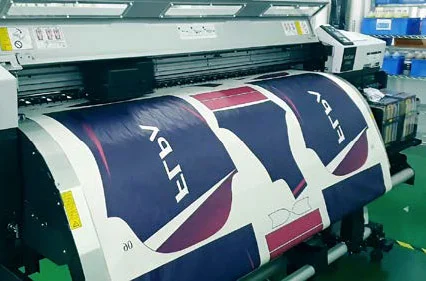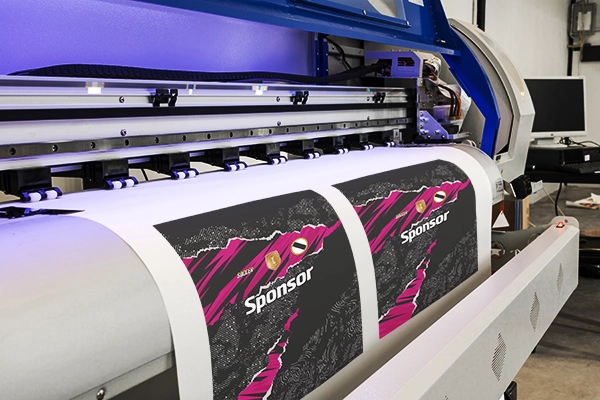Heat Transfer Vinyl Printing: Change Your T-Shirt Game Today
Heat Transfer Vinyl Printing: Change Your T-Shirt Game Today
Blog Article
From Standard to Digital: Understanding the Evolution of Cloth Printing
The transformation of towel printing from conventional approaches like block printing and resist dyeing to modern methods such as display and electronic printing marks a considerable change in the fabric sector. Traditional techniques, soaked in artisanal workmanship and social importance, have progressively given method to digital innovations that provide unprecedented precision, performance, and modification. This transition not only improves production abilities however likewise lines up with expanding needs for lasting methods. Just how do these innovations influence the significance of cloth printing, and what might the future hold for this ever-evolving craft?
Traditional Cloth Printing Methods
In the very early stages of fabric production, standard cloth printing techniques served as the keystone of fabric style, offering both performance and imaginative expression. Block printing, one of the oldest approaches, involved carving detailed designs right into wood blocks, which were then dipped in dye and pushed onto fabric.
Withstand dyeing, including methods like batik and tie-dye, employed wax or other materials to avoid dye from permeating particular areas of the material. This approach produced striking contrasts and detailed styles, commonly imbued with social significance. Stenciling, one more conventional method, included reducing patterns into a material and applying dye with the openings, supplying a simpler yet efficient method to generate recurring layouts.
These traditional techniques not only formed the fabric sector's very early advancement but likewise laid the foundation for future advancements. Each method reflected the local and social characteristics of its origin, protecting and distributing artisanal understanding with generations.
The Surge of Display Printing
Just how did display printing change the landscape of fabric layout? The introduction of screen printing in the early 20th century marked a substantial separation from traditional methods, using unmatched versatility and performance. This strategy entails pressing ink with a fine mesh screen that has actually been stenciled with a layout, enabling for high precision and consistency. Screen printing enabled developers to generate complex patterns and lively shades on materials, which were previously challenging to attain with block printing or hand-painting approaches.
Among the vital advantages of screen printing is its capacity to duplicate complicated layouts on a huge scale with impressive fidelity. This scalability made it exceptionally popular in the business textile industry, where automation without compromising quality is extremely important. Screen printing fits a wide variety of inks and dyes, expanding the combination of textures and surfaces readily available to developers.
Furthermore, the procedure is extremely versatile, suitable for different material types consisting of cotton, silk, and synthetics. This adaptability, incorporated with its cost-efficiency for big runs, strengthened screen printing's duty as a keystone of modern fabric manufacturing. Thus, the rise of display printing changed the sector, pressing the borders of what was possible in fabric design.

The Development of Digital Printing
Structure on the remarkable improvements brought by screen printing, the textile market experienced one more groundbreaking advancement with the development of electronic printing. Arising in the late 20th century, electronic printing reinvented the means layouts are moved onto materials, supplying unprecedented adaptability and performance. Unlike traditional methods, which frequently needed considerable setup and significant manual treatment, electronic printing uses computer-aided layout (CAD) modern technology to create complex patterns directly onto the fabric with high accuracy.
This innovation has actually made it possible for textile producers to meet the expanding demand for personalization and on-demand production. By removing the demand for displays and plates, electronic printing lowers lead times and reduces product waste, making it a more sustainable alternative. The capability to print intricate pictures and a variety of shades in a solitary pass has opened up brand-new innovative opportunities for designers, cultivating a rise in creative expression within the industry.
Additionally, electronic printing supports smaller set manufacturing runs, which is specifically beneficial for niche markets and start-up fashion brand names. This technological leap has not just improved functional effectiveness yet likewise equalized access to top quality fabric printing, setting the phase for future technologies in material layout and production.
Contrasting Techniques: Standard Vs. Digital
While both standard and digital printing approaches have their own one-of-a-kind advantages, they vary significantly in regards to process, effectiveness, and ecological impact. Conventional towel printing, encompassing methods like block printing and display printing, entails manual labor and complex workmanship. These methods are celebrated for their capability to generate abundant textures and lively shades, frequently leading to one-of-a-kind, artisan-quality items. However, they are labor-intensive, time-consuming, and commonly restricted in terms of color selection and layout intricacy.
In contrast, digital printing employs sophisticated technology to move designs straight onto fabric making use of inkjet printers. Digital printing is dramatically quicker, permitting for fast turnarounds and just-in-time production, which lowers the requirement for large supply storage.
From an environmental point of view, digital printing is generally extra sustainable. It makes use of less water and generates minimal waste compared to conventional methods, which typically include comprehensive cleaning and dyeing procedures. Subsequently, digital printing is significantly favored in next page an age where ecological considerations are extremely important.
Future Trends in Cloth Printing
As the textile market remains to evolve, future trends in fabric printing regularly point towards higher combination of innovation and sustainability. One considerable fad is the enhanced application of digital printing innovations. These advancements enable higher precision, quicker manufacturing times, and the capacity to develop intricate layouts that were once difficult with standard approaches. Digital fabric printing is expected dig this to dominate the market, driven by its effectiveness and flexibility to consumer demands for customized and limited-edition products.

In addition, the consolidation of clever textiles, which incorporate electronic elements into materials, is readied to transform the marketplace. These textiles can supply added performances such as temperature level policy, wellness monitoring, and interactive attributes. As technology continues to breakthrough, the crossway of electronic printing and clever textiles will open up brand-new avenues for imaginative and functional applications in fabric printing.
Verdict
The development of fabric printing from standard techniques to electronic innovations marks a considerable change in the textile industry. While traditional strategies highlight artisanal workmanship and social heritage, digital printing provides unequaled precision, efficiency, and personalization.
The improvement of cloth printing from conventional approaches like block printing and withstand dyeing to modern techniques such as display and digital printing notes a considerable shift in the fabric industry. Display printing enabled developers to produce detailed patterns and dynamic shades on materials, which click here for info were formerly challenging to attain with block printing or hand-painting techniques.
Structure on the amazing advancements brought by screen printing, the fabric industry experienced an additional groundbreaking development with the arrival of digital printing. sublimation printing. Traditional fabric printing, incorporating methods like block printing and display printing, involves hands-on labor and intricate workmanship. As technology continues to breakthrough, the crossway of electronic printing and wise fabrics will open up brand-new opportunities for imaginative and functional applications in fabric printing
Report this page